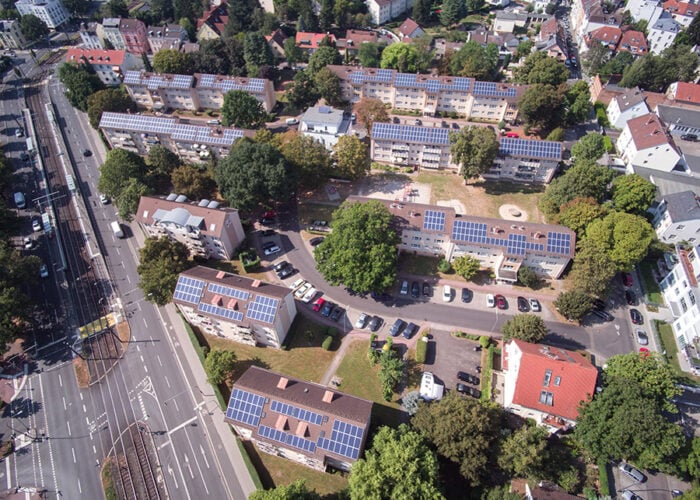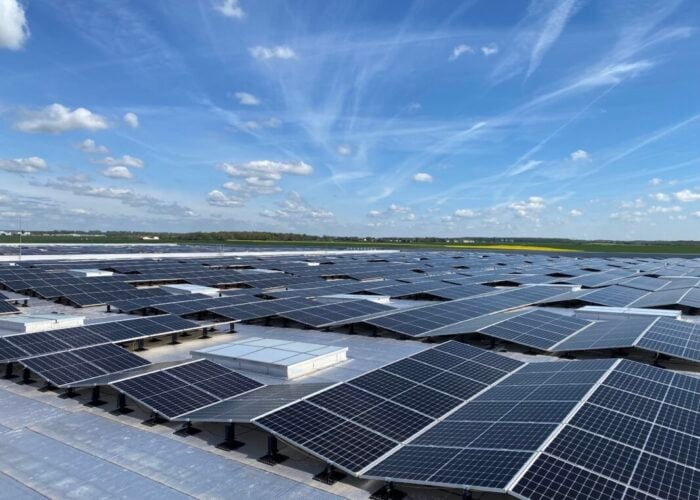
The Federal Energy Regulatory Commission (FERC) has announced key decisions this week providing clarity and to solar developers within the US, while signalling state support further down the line.
The rulings affect the US’ Public Utility Regulatory Policies Act (PURPA) and network operator PJM Interconnection’s minimum offer price rule (MOPR).
Unlock unlimited access for 12 whole months of distinctive global analysis
Photovoltaics International is now included.
- Regular insight and analysis of the industry’s biggest developments
- In-depth interviews with the industry’s leading figures
- Unlimited digital access to the PV Tech Power journal catalogue
- Unlimited digital access to the Photovoltaics International journal catalogue
- Access to more than 1,000 technical papers
- Discounts on Solar Media’s portfolio of events, in-person and virtual
PURPA payments
Federal regulators have reversed a 2020 ruling that broke away from a 40-year precedent and blocked a solar-plus-storage facility from receiving payments under the PURPA.
The FERC voted to allow qualifying facility status under PURPA to the Broadview Solar facility in Montana, having ruled against this last September due to a discrepancy on the definition of a small power system.
The ruling in September broke away from a precedent that meant that facilities with a 80MW net capacity should qualify. 80MW is the legal threshold a facility must meet in order to be defined as a small power system, and also the Broadview facility’s net capacity. However, FERC had originally decided that the system’s gross 160MW capacity made it ineligible for payments.
The September ruling argued that qualifying facilities could not take into account devices that can limit their output, such as inverters to determine their net output. Broadview Solar, a solar power facility with greater than 80MW of solar panel capacity, but only 80MW of inverter capability, was deemed ineligible for qualifying facility status.
The ruling was overturned on Thursday (18 March), with FERC finding that net output calculations should reflect a facility’s design and practical capabilities.
The reversal of the September ruling was welcomed by the trade body the Solar Energy Industry Association (SEIA), which said it would ensure that independent power producers are evaluated fairly when their capacity is tallied up.
“This is good news for solar-plus-storage facilities across the United States” said Gizelle Wray, SEIA’s director of regulatory affairs. “We are grateful to the commission for reinstating this policy”.
Jessica Bayles, a regulatory attorney with Stoel Rives who represents clients before FERC said the reversal of the order on Broadview this week “restored certainty” to the solar sector on how to calculate a system’s net power production capacity, which clarifies eligibility thresholds for qualifying status and PURPA contracts.
State subsidy clarification
During the same meeting, FERC also addressed a discrete state tax programme that would impact participants in an upcoming capacity auction from distributed network operator PJM Interconnection. The regulator responded to a petition from Virginia-based Hollow Road Solar LLC, which requested confirmation that the company would not be subject to the application of Minimum Offer Price Rule (MOPR), which was expanded last year, in PJM’s Base Residual Auction due to open in May.
Until recently, capacity market auctions in the PJM area only applied price floors to natural gas participants. However in December 2019, FERC directed PJM to significantly expand its MOPR to apply to all state-subsidised ventures, renewables included, drawing criticism from the clean energy sector.
PJM’s network covers 13 states, 10 of which, alongside the District of Columbia which have some form of renewable portfolio standard.
Hollow Road wanted to determine that a local property tax relief mechanism available to solar power facilities would not count as a state subsidy that would subject it to MOPR. PJM had originally decided that the tax relief would make recipients subject to the price floor, but FERC disagreed on Thursday, meaning solar power project owners can benefit from it and not be aversely affected in PJM’s capacity auctions.
Bayles said that the declaratory order on Hollow Road Solar LLC also provided “more guidance to the industry on how the commission will interpret the boundaries of State Subsidies that subject recipients to the PJM MOPR.”






